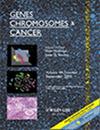Clinicopathologic and Molecular Analysis of Primary Angiosarcoma of Bone—A Single Institution Experience
Abstract
Purpose
Bone angiosarcoma (B-AS) is an exceedingly rare and aggressive vascular neoplasm, with limited therapeutic options and poor outcomes. Unlike the more prevalent clinical subsets (breast, head and neck), the pathogenesis of B-AS remains poorly defined, with no targeted therapeutic strategies available. Moreover, the often delays in diagnosis, either radiographically or pathologically, as well as the common multifocal presentation, further impact the feasibility of surgical management, contributing to lower survival rates. In this study, we investigated the clinicopathologic and molecular characteristics of B-AS to better define prognostic factors influencing outcomes.
Patients and Methods
This retrospective study analyzed 22 cases of B-AS managed at a single tertiary cancer center from 1998 to 2024. Clinical and pathologic data were extracted through chart reviews and re-assessment of radiology and histology. Molecular characterization was performed in a subset using targeted next-generation sequencing (NGS).
Results
The cohort included 14 males and eight females (median age: 64.5 years), with tumors mostly involving femur, pelvis, and spine. Twelve (55%) patients presented with disease limited to the bone, either solitary or multifocal, while 10 (45%) patients presented in addition with extraskeletal metastases at diagnosis. The skeletal distribution included six (27%) solitary bone lesions, with the remaining 16 being multifocal (four contiguous, twelve disseminated). A surgical procedure for the bone lesions was performed in 73% of cases, varying from intralesional curetting to limb amputation. Half of the patients received radiation, and 73% chemotherapy. By molecular profiling, all tumors showed a low tumor mutational burden (TMB), with the most frequent alterations being KDR mutations and MYC amplifications. Age and chemotherapy were significantly associated with improved overall survival (OS) (p < 0.005); however, the 3-year OS was only 30%.
Conclusion
Despite the multidisciplinary approach and orthopedic oncology expertise from a tertiary cancer center, the prognosis for B-AS remains poor. Although limited in number, the molecular profiling revealed overlapping genomic alterations with other clinical subsets of AS, having the potential for individualized patient management.

 求助内容:
求助内容: 应助结果提醒方式:
应助结果提醒方式:


